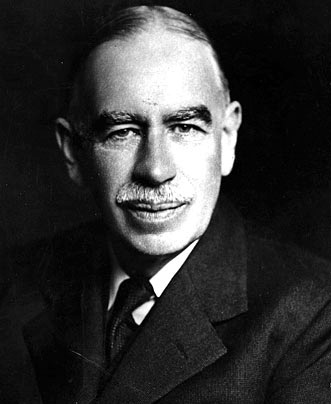End of the era of liquidity traps?
The linked article below from The Economist looks at whether the election of Donald Trump, the effects of the Brexit vote and policies being pursued elsewhere in the world mark a new macroeconomic era. We may be about to witness rising inflation and the end of the era of tight fiscal policy and loose monetary policy. We might see a return of a more Keynesian approach to macreconomic policy.
According to the article, since the financial crisis of 2008, we have been witnessing economies stuck in a liquidity trap. In such cases, there is little scope for further reductions in interest rates. And increases in money supply, in the form of quantitative easing, tend to be held in idle balances, rather than being spent on goods and services. The idle balances take the form of increased bank reserves to rebuild their capital base and increased purchases of assets such as shares and property.
Even if people did believe that monetary policy would work to boost aggregate demand and result in higher inflation, then they would also believe that any such boost would be temporary as central banks would then have to tighten monetary policy to keep inflation within the target they had been set. This would limit spending increases, keeping the economy in the liquidity trap.
 With a liquidity trap, fiscal policy is likely to be much more effective than monetary policy in boosting aggregate demand. However, its scope to pull an economy out of recession and create sustained higher growth depends on the extent to which governments, and markets, can tolerate higher budget deficits and growing debt. With governments seeking to claw down deficits and ultimately debt, this severely limits the potential for using fiscal policy.
With a liquidity trap, fiscal policy is likely to be much more effective than monetary policy in boosting aggregate demand. However, its scope to pull an economy out of recession and create sustained higher growth depends on the extent to which governments, and markets, can tolerate higher budget deficits and growing debt. With governments seeking to claw down deficits and ultimately debt, this severely limits the potential for using fiscal policy.
With the election of Donald Trump, we might be entering a new era of fiscal policy. He has promised large-scale infrastructure spending and tax cuts. Although he has also promised to reduce the deficit, he is implying that this will only occur when the economy is growing more rapidly and hence tax revenues are increasing.
Is Donald Trump a Keynesian? Or are such promises merely part of campaigning – promises that will be watered down when he takes office in January? We shall have to wait and see whether we are about to enter a new era of macroeconomic policy – an era that has been increasingly advocated by international bodies, such as the IMF and the OECD (see the blog post, OECD goes public).
Article
Slumponomics: Trump and the political economy of liquidity traps The Economist (10/11/16)
Questions
- Explain what is meant by ‘the liquidity trap’.
- Why is monetary policy relatively ineffective in a liquidity trap? Use a diagram to support your argument.
- Why is fiscal policy (in the absence of public-sector deficit targets) relatively effective in a liquidity trap? Again, use a diagram to support your argument.
- Examine how the Japanese government attempted to escape the liquidity trap? (Search this site for ‘Abenomics’.)
- In what ways may the depreciation of the pound since the Brexit vote help the UK to escape the liquidity trap?
- Could a different form of quantitative easing, known as ‘helicopter money’, whereby government or private spending is financed directly by new money, allow countries to escape the liquidity trap? (Search this site for ‘helicopter money’.)
- Why may a political upheaval be necessary for a country to escape the liquidity trap?
